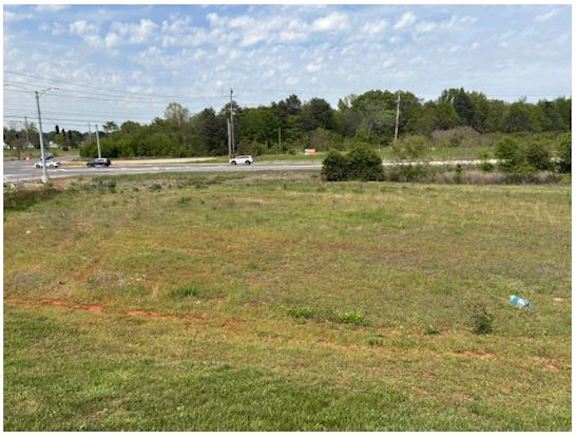FROM ONE GARDENER TO ANOTHER: How low can you grow?
Published 2:00 pm Sunday, May 27, 2018

- Ground cover is good to use on slopes to prevent soil erosion and where mowing is difficult. They can adapt to areas of high rainfall and humidity and can add interest to the landscape design.
A few weeks ago, it became necessary to clear the small garden bed around my mailbox.
There were some sorry-looking plants in there that never really seemed to take off. The weeds, however, seemed to do just fine.
Trending
I had plans to put in some lovely annuals there so I could reinvent the space each year. The thing is, that would involve either installing drip irrigation, which would be a long way from the water source, or dragging the hose down the driveway to water them.
Since the spot is in the full blazing Alabama sun, that would be often. I decided on ground cover.
Ground cover is generally low-growing and has a carpeting effect. Once established, ground covers usually maintain themselves with minimum care. That is exactly what I wanted for that area.
Truth be told, that’s what I want for every area, but what fun would that be?
Along with being low maintenance, they have many other uses in the garden. Ground covers can be used as edging for pathways to help regulate foot traffic. Many ground covers grow well in shade, so they may be used for accent areas under trees or around patios that produce shade.
They can be used to cover large areas. Grass is the most widely used ground cover; however, there is a large variety of textures, color and those that produce flowers to choose from. Many of these ground covers are useful for covering areas where grass won’t grow.
Trending
They are good to use on slopes to prevent soil erosion and where mowing is difficult. They can adapt to areas of high rainfall and humidity and can add interest to the landscape design.
Preparing the soil before planting will help the plants establish and give longevity to perennial ground covers. To prepare the soil, first till the entire area you plant to cover and work in two inches of peat moss or shredded pine bark. Apply fertilizer according to soil test recommendations. Finally, water the area thoroughly after planting.
Select plants that work well in your site. Take into consideration light and water requirements of the plants, as well as the size the plant will be at maturity.
The following is a list of a few flower and drought-tolerant ground covers that may work well for you:
• Creeping phlox is a full-sun ground cover that blooms in purple, blue and white, but it is most often seen in pink. It is great for slopes and especially great in rock gardens;
• Dianthus firewitch produces clumps of grassy, blue-grey foliage and a full summer display of magenta-pink blooms. It is another full sun lover and perfect for hot, dry sites. It also attracts butterflies and is evergreen;
• Roman chamomile has daisy-like, fragrant blooms that stand 4 to 8 inches in height and spread up to 12 inches. It is a full sun plant that thrives in hot, dry conditions;
• Blue star creeper can grow in full sun but will thrive best in filtered light. It is easy-to-grow and will produce pale blue blooms from spring to early fall;
• Corsican mint is a low-growing ground cover reaching only about an inch in height. It will release a mint scent when stepped on and has tiny pale mauve blooms in summer. It prefers shade and some afternoon sun; and
• Sedum, a succulent plant, comes in many varieties. “Baby Tears” has tear-drop shaped leaves that turn red in autumn and spikes of white flowers that shoot up in summer. It can grow in sun to partial shade.
The list wouldn’t be complete without at least one annual ground cover, purslane. This is a personal favorite. I currently have this growing not only as ground cover but spilling from a bicycle basket and a couple of hanging baskets.
Purslane flowers close and reopen as it becomes sunny in the mornings. They bloom from early summer to early fall. This succulent plant comes in a variety of single colors and also a mixed variety. Mine are the color of an orange creamsicle and give a beautiful pop of color.
Ground covers come in so many varieties, and for every need, that finding the one that suits your style and desire is “covered.”
See what I did there?
Until next week, happy gardening.
— Irland, a member of the Limestone County Master Gardeners, can be reached at kippirland@hotmail.com. For more information on the Limestone County Master Gardeners, visit http://mg.aces.edu/limestone.





